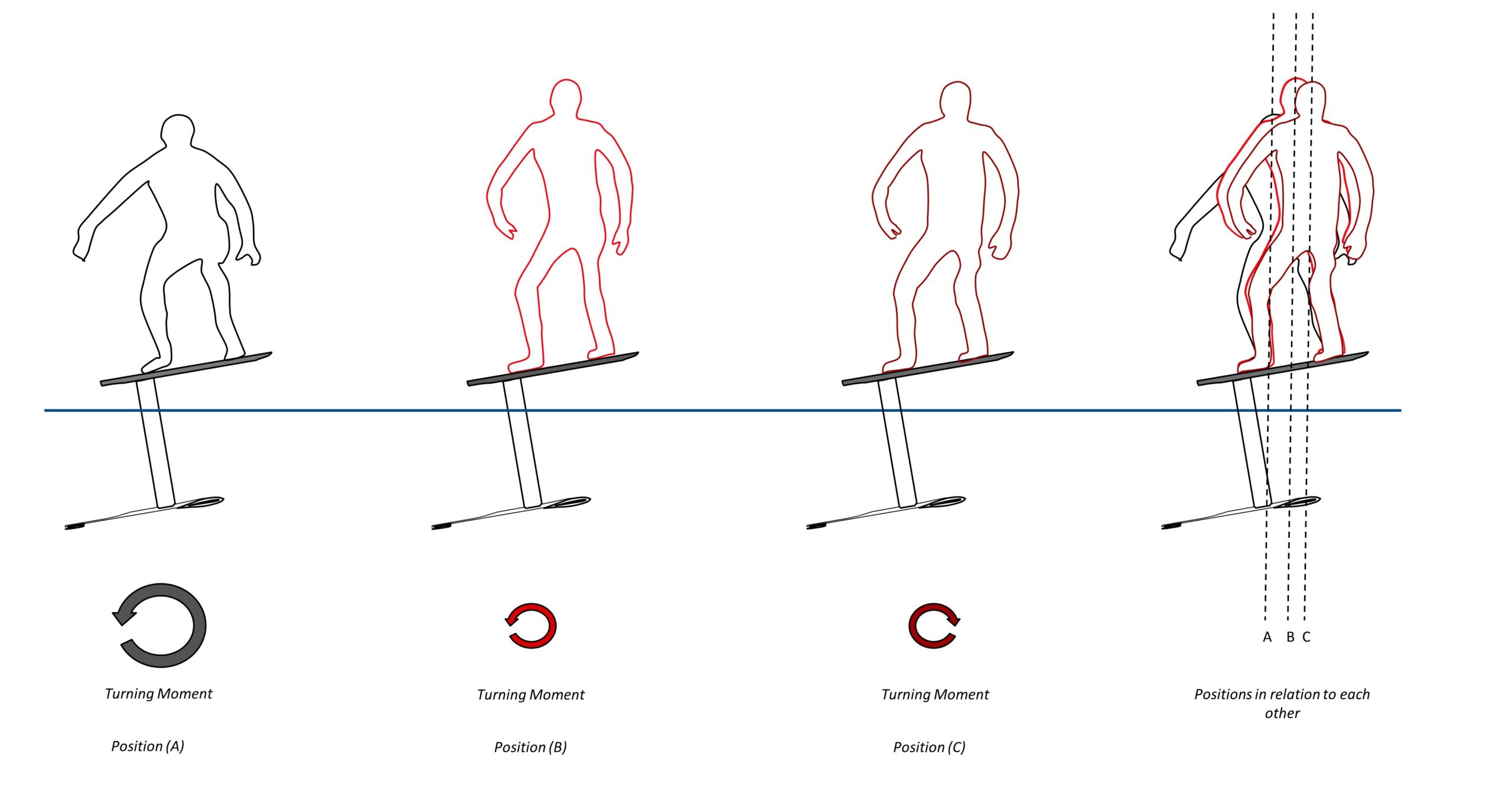Why is the body position important when pumpfoiling?
You will not become a pumpfoil master within an hour. First you have to master the dockstart and then learn the pumping technique to get into a nice pumping pattern. Very often I observe beginners who manage the dockstart, however, after three or four pumps they loose speed and cannot continue their ride.
One of the most common mistakes is the position and weight distribution on the board. In this article, I will explain you why the body position is important.
You can watch this article also as a video here.
In general, the motion sequence is a sinus shape trajectory. By moving the board downwards, we accelerate the board with the goal to achieve enough speed to generate the required lift to lift up the rider together with his equipment. Before the board touches the water surface, the rider levels the board up again to conclude the circle.

Figure 1 – Pumpfoiling sequence
The critical phase starts when the board has reached the lowest point over the surface and is moving with an inclined angle upwards again. In this phase, beginners often have too much layback and as consequence, cannot give enough weight to the front/on the front foot. As a result, some of them are loosing the speed completely or are even kicked of backwards from the board.
So why is this phase critical and some pumpfoilers struggle with that? I will not do a deep dive into physics, but let us have a quick look at the forces acting in this system (please note that I applied some simplifications to keep it on a high level approach and make it more easy to understand).

Figure 2 – Momentum Theorem and Sum of the Forces
The force induced by the pumpfoiler is indicated with the purple arrow pointing downwards, the lift generated by the front wing is indicated with the red arrow pointing upwards, and the downforce generated by the backwing is indicated by the grey arrow pointing downwards. As you may remember from your physics lessons at schools, forces can also lead to torsional moments. This is the case when there is no force equal and opposite directly along it’s line of action. The magnitude of the torsional moment is directly proportional to the distance of the force from the point or axis.
When we apply this principle on pumpfoiling, we see that all the forces result in a torsional moment. The consequence is, that when we do not have enough weight respectively force in the front area, the resulting moment of the forces will kick you off backwards from the board as you will not be in the position to more force in the line of axis you need to turn the board down again.

Figure 3 – Too much layback resulting in backwards torsional moment
In addition to that, when we sum up the forces, we see that the resulting force has a component pointing in opposite direction of the driving direction. That explains why we are loosing speed in this phase of the movement.
Well, how should you now react in this situation? As we learnt before, the problem occurs when we cannot apply enough force which counteracts the backwards turning moment induced by the frontwing. Therefore, the solution is to be aware of the position of your body as well as how much weight you load on your front foot. As we can see in the following figure, the more we bend the body in driving direction, the more weight we will have on the front foot. That moves the line of action of the force implied by the foiler and changes the resulting torsional moment in magnitude and also at one point in direction. The figure below shows in a qualitative way this behaviour.

Figure 4 – Body positions and their impact
Most probably some of you now ask the question „how much do I have to lean forward“ respectively „how much weight do I need on my front foot“?
For sure, this is dependent on the foiler’s weight as well as the equipment. However, what you can take as a rule of thumb is, that you always have to keep your body slightly in front of the rotation axis of your setup, especially also during the phase when you change from the downward to the upward movement. Only with that you achieve that after you relieved the pressure on the board when changing from the downwards to the upwards movement, increased pressure to stop the upwards turn or decrease the angle when getting too high is applied in a line of attack to generate the required torsional moment.

Figure 5 – Relativ position of the body
I hope I could visualize why the body position is that important and what is often the cause, that beginners are kicked-off backwards from the board or are loosing too much speed during pumping.
Anyway, the most important in pumpfoiling is to have fun and not let yourself being demotivated when it doesn’t work out with the first attempts!

